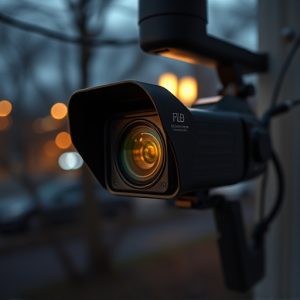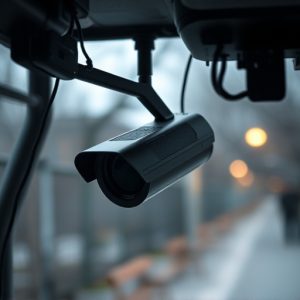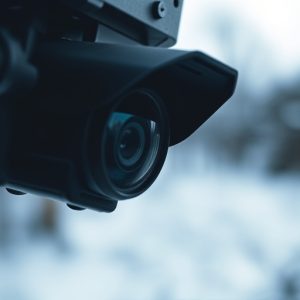Camouflaging Tech: AI-Integrated Spy Cameras & Ethical Evolution
Surveillance technology has evolved dramatically with the integration of artificial intelligence (AI…….
Surveillance technology has evolved dramatically with the integration of artificial intelligence (AI), enabling advanced and subtle observation through spy cameras. AI-powered systems enhance image recognition, facilitate real-time data analysis, and improve overall efficiency, while creative camouflage strategies hide these devices in plain sight. However, this advancement raises significant ethical concerns regarding privacy and civil liberties, requiring careful management to balance security with transparency, accountability, and respect for individual rights.
In an era driven by advanced technology, surveillance equipment has evolved from mere peepholes to sophisticated tools with artificial intelligence (AI) integration. This article explores the historical evolution of surveillance technology and delves into the disruptive role of AI in spy cameras, enhancing capabilities and introducing creative camouflage techniques. We examine how modern equipment can blend seamlessly into their surroundings, raising ethical considerations while also discussing future trends in this complex landscape.
- Understanding the Evolution of Surveillance Technology: A Historical Perspective
- The Rise of Artificial Intelligence in Spy Cameras: Enhancing Capabilities and Disruption Techniques
- Creative Camouflage Strategies: Hiding in Plain Sight with Advanced Equipment
- Ethical Considerations and Future Trends: Navigating the Complexities of Surveillance Equipment Camouflage
Understanding the Evolution of Surveillance Technology: A Historical Perspective
Surveillance technology has evolved significantly over the years, from simple static cameras to advanced systems integrated with artificial intelligence (AI). This evolution is driven by the need for more effective and discrete monitoring solutions. Historically, surveillance equipment was often bulky and easily detectable, limiting its effectiveness and acceptance. The introduction of spy cameras marked a significant shift, allowing for concealed observation without raising suspicion.
As technology advanced, so did the capabilities of these devices. The integration of AI has further revolutionized surveillance by enhancing image recognition, enabling real-time data analysis, and improving overall system efficiency. This historical perspective highlights the continuous drive to create more sophisticated and less obtrusive surveillance equipment, catering to the ever-changing needs of security and privacy in today’s world.
The Rise of Artificial Intelligence in Spy Cameras: Enhancing Capabilities and Disruption Techniques
The integration of Artificial Intelligence (AI) into spy camera technology has marked a significant shift in surveillance capabilities, propelling the field into an exciting new era. AI algorithms now power advanced image and video analysis, enabling cameras to not only capture high-resolution footage but also interpret and understand it. This transformation allows for more accurate object recognition, facial detection, and behavior tracking, enhancing the overall effectiveness of surveillance systems. With machine learning capabilities, spy cameras can adapt to their environment, improving their performance over time and even predicting potential threats or unusual activities.
However, this technological advancement presents a double-edged sword. As AI improves, so do counter-surveillance techniques. Disruptive technologies are emerging to challenge the reliability of AI-integrated spy cameras. From advanced image manipulation to deceptive visual patterns, these methods aim to confuse and mislead AI algorithms, rendering the surveillance equipment less effective. The continuous arms race between developers and disruptors pushes the boundaries of what’s possible in both surveillance technology and its countermeasures, shaping a dynamic landscape in the world of spy camera artificial intelligence integration.
Creative Camouflage Strategies: Hiding in Plain Sight with Advanced Equipment
In today’s digital age, surveillance equipment has evolved beyond recognition, integrating advanced technologies like artificial intelligence (AI) to enhance its effectiveness and stealth. Creative camouflage strategies are being developed to hide these devices in plain sight, making them less obtrusive and more effective. AI-powered spy cameras can now blend seamlessly into their surroundings, thanks to sophisticated algorithms that adapt to various environments. From smart, heat-sensing lenses that mimic natural patterns to miniature, self-adhesive cameras that resemble everyday objects, these innovations offer unprecedented levels of discretion.
This new era of surveillance equipment design leverages AI integration to analyze and predict movements, enhancing the overall efficiency of the system while maintaining a low profile. Whether it’s a hidden camera disguised as a rock or a voice-activated recorder that sounds like a common household device, these creative camouflage techniques ensure that vital information can be gathered discreetly without drawing unwanted attention.
Ethical Considerations and Future Trends: Navigating the Complexities of Surveillance Equipment Camouflage
As surveillance technology advances, integrating artificial intelligence (AI) into spy camera systems has become a game-changer. While this innovative approach offers enhanced capabilities in terms of image analysis, object recognition, and real-time data processing, it also raises significant ethical considerations. Privacy advocates argue that AI-powered surveillance equipment can infringe upon citizens’ personal space and privacy, especially when used in public areas or without explicit consent. The potential for abuse and the impact on civil liberties are paramount concerns, requiring strict regulations and oversight to ensure responsible deployment.
Looking ahead, the future of surveillance equipment camouflage is likely to involve even more sophisticated techniques. Developers might explore advanced materials with adaptive properties that can dynamically change appearance to match their surroundings, making cameras virtually invisible. Additionally, AI algorithms could be refined to predict and anticipate human behavior, allowing for proactive surveillance strategies. However, these advancements must be carefully balanced against the need for transparency, accountability, and respect for individual rights in a democratic society.
The evolution of surveillance technology, driven by advancements in artificial intelligence integration within spy cameras, has led to unprecedented capabilities and ethical dilemmas. Creative camouflage strategies now enable discreet monitoring, blurring the lines between observation and privacy. As these techniques continue to advance, it’s crucial to navigate the complexities and ensure responsible use, fostering a balance between security and individual freedoms in the digital age. The future of surveillance equipment camouflage demands thoughtful consideration and innovative solutions to address societal needs while mitigating potential disruptions.


